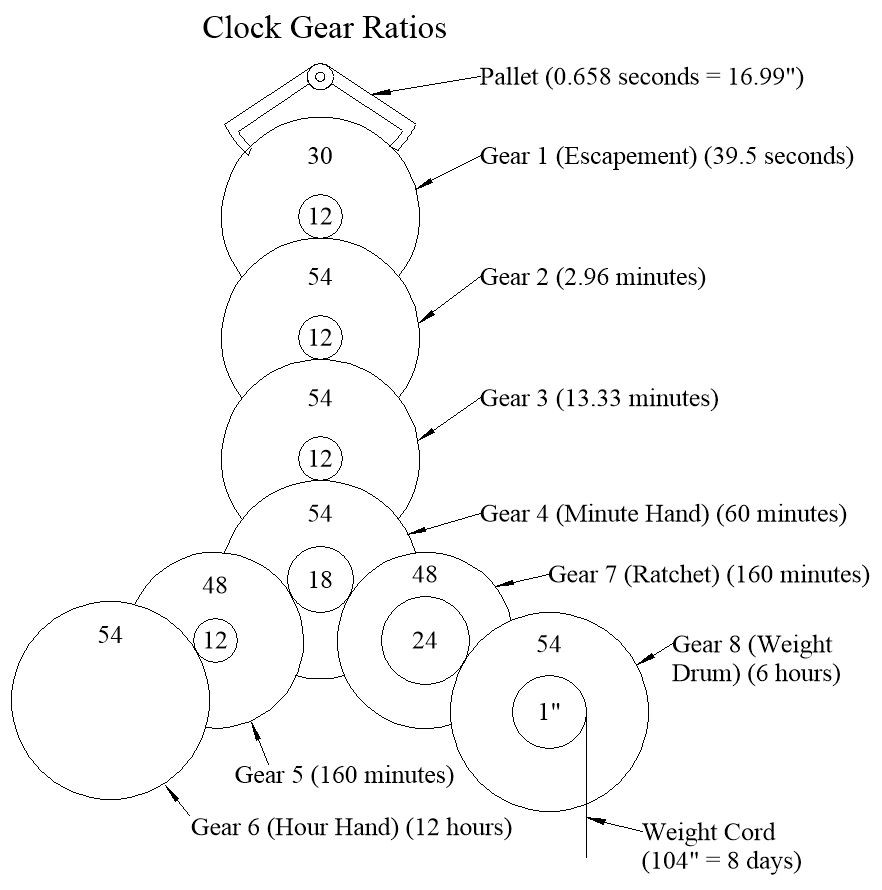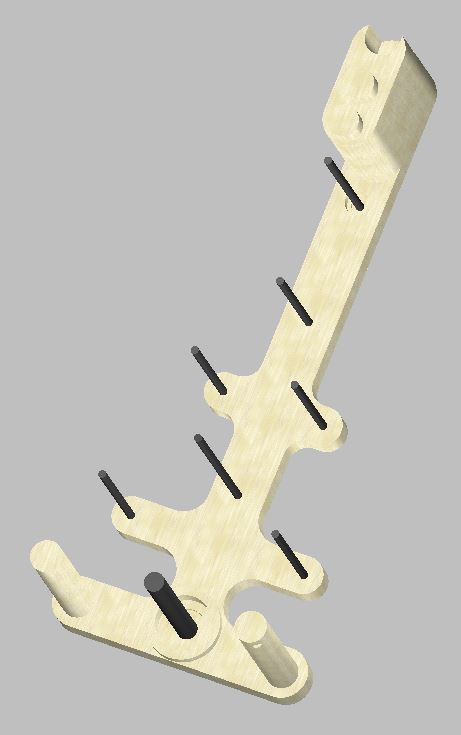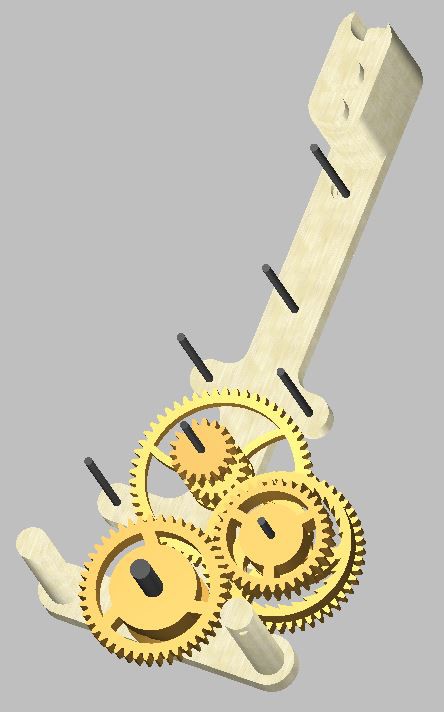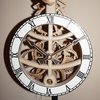A pendulum clock is conceptually very simple. A spring or falling weight provides energy to a swinging pendulum that swings at a constant rate. A series of gears convert the pendulum motion into a display for the hours and minutes. The challenge is to make everything work elegantly and accurately. Designing this clock has been a spare time hobby of mine for the past 6-8 months. I started with a basic sketch of the clock, then fit the gears so they would be relatively symmetrical.
Involute gear profiles were designed using Gearotic and imported into TurboCAD for final adjustments. One of the first experiments was to determine a good gear tooth size. They needed to be large enough to print accurately, but not so large to exceed the capabilities of my printer. I printed an assortment of gear sizes ranging from 10 dot pitch down to 40 DP and selected 20 DP as my favorite. A 20 DP gear with 60 teeth will be 3" in diameter. Smaller pitches were possible, but some of the teeth were slightly distorted. I printed the gears in gold colored filament to get them to look like brass.
The next step was to design the overall gear train. Most pendulum clocks share the same basic structure with slight differences in the gear ratios. The basic requirement is that the minute hand should rotate once per hour and the hour hand should rotate once per 12 hours. I used a traditional Roman numeral dial for this clock.
A pendulum swings at a constant rate depending on its length. The constant rate is what helps the clock keep accurate time. This clock uses a deadbeat escapement designed in Gearotic. A traditional clock design with 60:8 and 64:8 gear ratios would need a 39" pendulum rod which seemed too long for this design, so I changed the gear ratios to allow for a shorter pendulum. Three sets of gears with 54:12 ratios drive a 30 tooth escapement and a 17" pendulum with 5467.5 beats per hour. This gives a balanced look but loses the ability to add a second hand.
The final component of the gear train is the weights. A falling weight provides power to the minute hand which in turn pushes the pendulum. An 8 day run time with 52" of drop means that the weight will drop 6.5" per day. A pulley doubles the length to unwind 13" of cord per day. A 1" winding drum will only rotate once every 6 hours. Two gear sets divide this down to one rotation per hour of the minute hand. The weight shell holds 4.5 pounds of lead shot to provide just enough power to keep the clock running. Some of my initial experiments used a larger weight shell and a 3:1 divide ratio with only a 4 day run time. I added steel bushings at several critical locations to reduce friction enough to use the 8 day gear set.
The clock frame consists of two major components. The back frame integrates a metal keyhole hanger to hang the clock on the wall. Standoffs push the clock body away from the wall for pendulum clearance. The top of the frame has a robust support bar to prevent frame sag from the heavy weight shell. This design could easily handle double the weight with no visible sagging. The support bar also includes a convenient location to store the winding key.
The front frame integrates the dial and numbers into a single 3D print. The first few layers are printed tan colored with pauses for the ivory colored dial and black numbers. The same multi-layer technique is used to add gold highlights to the clock hands. The front and back frame sections just barely fit diagonally on the MK3 print bed. The pendulum is a two piece clamshell with a few pennies added for weights. It pivots on two small ball bearings with the grease removed to lower the friction. The pendulum rod was printed in two sections and epoxied together with a threaded rod sticking...
 Steve
Steve












Very nice work just wondering about your reasoning for ratios.
Ok, I mapped out ratios as follows:
in order of wheel to pinon linkage:
Escape 60 teeth, pinion 16
64 8
30 16
64 18 Minutes
48 12
54 12 -Hours.
This gives me a 60 to 1 overall ratio vs your 91. Also, i get seconds hand from escapement.
My pendulum would be 9.77 inches vs 17 for yours.
Just wondering? What do you think of that? i would think lower ratio would require less weight to drive clock and less stress. Also, shorter pendulum sounds good.
Am i on to something here?
Your thoughts much appreciated. i am no expert